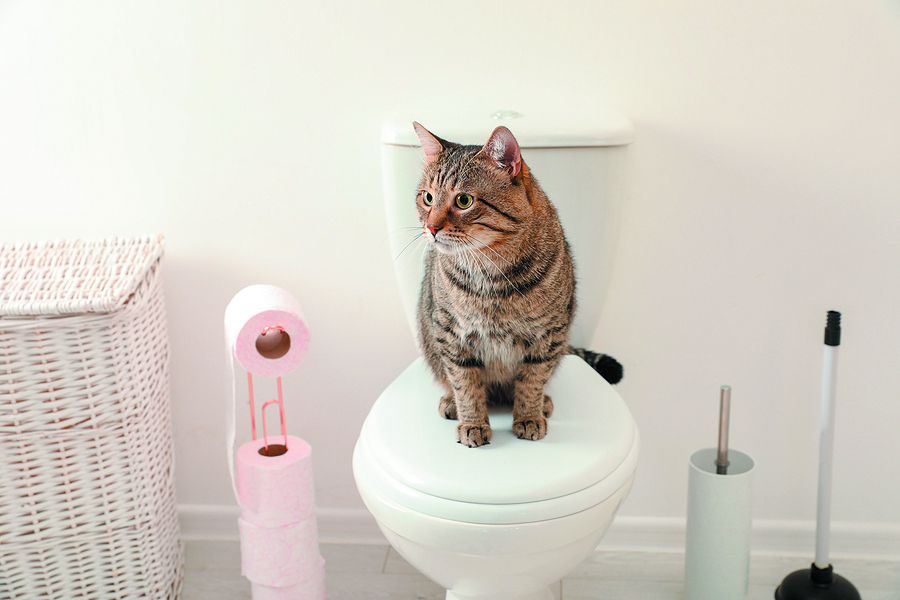Recommended Motives to Stay away from Flushing Animal Waste Down the Toilet
Recommended Motives to Stay away from Flushing Animal Waste Down the Toilet
Blog Article
We've encountered this article on 4 Reasons Why Dog Poop Cleanup is Important down the page on the internet and figured it made sense to quickly share it with you here.

When it involves throwing away waste, specifically animal waste, lots of people usually consider the hassle-free alternative of flushing it down the commode. Nevertheless, this relatively easy solution can have significant effects for the atmosphere and public health. In this short article, we'll explore why flushing animal waste down the commode is a poor idea and give alternate methods for correct disposal.
Intro
Proper garbage disposal is important for keeping environmental sustainability and public health. While it may appear safe to flush animal waste down the toilet, it can bring about numerous concerns, both for the atmosphere and human well-being.
Threats of flushing animal waste
Environmental influence
Purging pet waste introduces unsafe bacteria and pathogens into rivers, which can negatively influence marine communities. These virus can contaminate water resources and damage marine life, interfering with delicate ecosystems.
Public health worries
Animal waste includes harmful germs such as E. coli and Salmonella, which can pose severe health risks to humans. Flushing pet waste down the commode can infect water supplies, bring about the spread of conditions and infections.
Alternatives to flushing
As opposed to flushing pet waste down the toilet, there are numerous alternate disposal methods that are much more eco-friendly and sanitary.
Composting
Composting animal waste is an environmentally friendly means to deal with it. By composting, organic matter is broken down right into nutrient-rich soil, which can be made use of to fertilize yards and plants.
Garbage dump disposal
Getting rid of animal waste in a garbage dump is one more option. While not as eco-friendly as composting, it is a safer option to flushing, as it prevents the contamination of water sources.
Pet dog waste disposal systems
There are customized pet waste disposal systems readily available that safely and hygienically deal with animal waste. These systems typically use enzymes to break down waste and eliminate smells.
Actions to appropriate animal garbage disposal
To make certain proper disposal of animal waste, follow these actions:
Scooping and bagging waste
Routinely scoop and bag animal waste making use of naturally degradable bags. This avoids waste from polluting the setting.
Making use of designated waste containers
Dispose of bagged pet waste in marked waste containers, such as garden compost bins or land fill containers. Prevent flushing it down the commode in any way expenses.
Cleaning up can and pet areas frequently
On a regular basis tidy can and animal locations to avoid the build-up of waste and bacteria. Usage pet-safe cleansing products to preserve hygiene.
Benefits of correct disposal approaches
Embracing appropriate disposal approaches for animal waste offers a number of benefits:
Lowered environmental pollution
Proper disposal approaches reduce the danger of environmental pollution, protecting waterways and communities from contamination
Lessened risk of water contamination.
By avoiding flushing pet waste down the commode, the risk of water contamination is substantially lowered, safeguarding public health.
Boosted hygiene and health
Proper disposal techniques advertise far better hygiene and health, creating a safer environment for both humans and pets.
Conclusion
In conclusion, purging pet waste down the commode is unsafe to the environment and public health. By embracing alternate disposal methods and following proper waste administration practices, we can minimize the adverse influence of animal waste and add to a cleaner, healthier earth.
What To Do With Dog Poo – The Do's And Don'ts Of Disposing website Of Faeces
Dog poo bins
Some councils provide dedicated dog waste bins in popular dog-walking areas that can take dog poo that has been bagged but you can legally dispose of dog waste in any public litter bin, as long as it is securely bagged. This also applies to your wheelie bin at home.
Do not flush
Water companies do not recommend flushing dog faeces down the toilet because certain parasites can survive the water processing treatment and are potentially harmful to humans. You should also never consider flushing dog poo that has been bagged down the toilet as the bags will not break down and instead create severe blockages in the sewage system.
In the woods
The Forestry Commission promotes a ‘stick and flick’ method for dealing with waste in the woods. This means finding a stick and using it to flick any poo from off the path so that it is out of the way of other walkers. You could also bury it as long as it is not in an area where there might be livestock.
Livestock
Parasites found in dog poo can be transmitted to livestock if they inadvertently eat infected faeces that has been left on grazing land. This could result in the death of sheep or abortion in cattle so you should always make sure you pick up your dog’s waste in fields where livestock could be present.

On a regular basis tidy can and animal locations to avoid the build-up of waste and bacteria. Usage pet-safe cleansing products to preserve hygiene.
Benefits of correct disposal approaches
Embracing appropriate disposal approaches for animal waste offers a number of benefits:
Lowered environmental pollution
Proper disposal approaches reduce the danger of environmental pollution, protecting waterways and communities from contamination
Lessened risk of water contamination.
By avoiding flushing pet waste down the commode, the risk of water contamination is substantially lowered, safeguarding public health.
Boosted hygiene and health
Proper disposal techniques advertise far better hygiene and health, creating a safer environment for both humans and pets.
Conclusion
In conclusion, purging pet waste down the commode is unsafe to the environment and public health. By embracing alternate disposal methods and following proper waste administration practices, we can minimize the adverse influence of animal waste and add to a cleaner, healthier earth.
What To Do With Dog Poo – The Do's And Don'ts Of Disposing website Of Faeces
Dog poo bins
Some councils provide dedicated dog waste bins in popular dog-walking areas that can take dog poo that has been bagged but you can legally dispose of dog waste in any public litter bin, as long as it is securely bagged. This also applies to your wheelie bin at home.
Do not flush
Water companies do not recommend flushing dog faeces down the toilet because certain parasites can survive the water processing treatment and are potentially harmful to humans. You should also never consider flushing dog poo that has been bagged down the toilet as the bags will not break down and instead create severe blockages in the sewage system.
In the woods
The Forestry Commission promotes a ‘stick and flick’ method for dealing with waste in the woods. This means finding a stick and using it to flick any poo from off the path so that it is out of the way of other walkers. You could also bury it as long as it is not in an area where there might be livestock.
Livestock
Parasites found in dog poo can be transmitted to livestock if they inadvertently eat infected faeces that has been left on grazing land. This could result in the death of sheep or abortion in cattle so you should always make sure you pick up your dog’s waste in fields where livestock could be present.

Do you really like reading up on Can You Flush Dog and Cat Poo Down the Toilet?? Give feedback down the page. We would be glad to see your views about this piece. We are looking forward to see you back again soon. Sharing is caring. Who knows, you may very well be doing someone a favor. We enjoy your readership.
Book Report this page